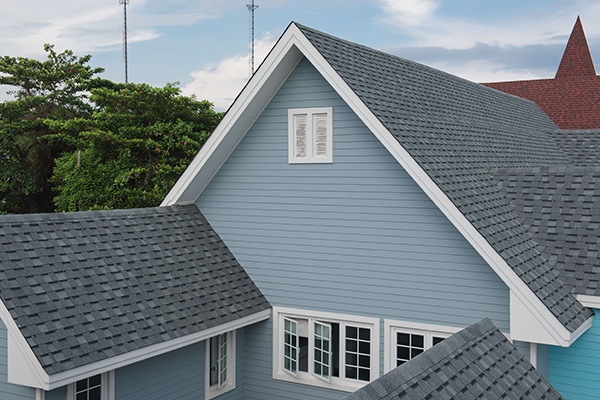Keeping your roof shingles clean, tidy, and in order is not just about the aesthetics; it’s a necessity for any homeowner or business owner who wishes to prolong the life of their property exterior and interior.
We have compiled this useful list of practical dos and don’ts to help you clean roof shingles effectively and safely. With these guidelines, you’ll be well-equipped to tackle roof maintenance with confidence and protect your property against the elements.
Do: Pre-Cleaning Preparations
Before diving into cleaning your roof shingles, it’s important to prepare adequately. Start by clearing away any debris such as leaves, branches, and other loose materials that may have accumulated on your roof. This initial step prevents debris from clogging gutters and potentially causing water damage during cleaning or heavy rains.
Additionally, inspect and clean your gutters thoroughly to make sure there’s proper water drainage from the roof. Blocked gutters can lead to water backup, which can damage both your roof and the interior of your home.
Lastly, protect nearby plants and landscaping by covering them with tarps or plastic sheeting. This precaution prevents cleaning solutions or debris from inadvertently damaging or contaminating your greenery.
Do: Gentle Cleaning Techniques
Maintaining your roof shingles with gentle cleaning techniques is vital for preserving their integrity and appearance over time. A soft-bristle brush or broom is an excellent tool for removing surface debris and light stains without causing damage to the shingles. Opt for brushes with natural bristles or soft synthetic fibers to avoid scratching or gouging the shingle surface.
With regard to cleaning solutions, choose mild detergents or specialized roof cleaners designed specifically for the type of shingles you have.
These cleaners are formulated to effectively remove dirt, algae, and moss while being gentle on the shingle material. Avoid using harsh chemicals or abrasive cleaners that can strip away protective coatings and diminish the shingles’ weather resistance.
After applying the cleaning solution, gently rinse the roof shingles with low-pressure water. High-pressure washing can dislodge granules and loosen shingles, compromising their structural integrity. Use a garden hose with a spray nozzle set to a gentle stream or a low-pressure power washer to rinse away dirt and cleaning residue.
Regular cleaning prevents the buildup of debris and organic matter that result in moisture retention and roof deterioration over time. Incorporate these gentle methods into your roof maintenance routine to achieve a clean and well-protected roof for decades.
Do: Regular Cleaning and Maintenance Schedule
Establishing a regular cleaning and general maintenance schedule for your roof is key to prolonging its lifespan and preventing costly repairs. A proactive approach to roof maintenance includes routine cleaning, inspections, and minor repairs to address issues before they escalate.
Start by establishing a cleaning routine that aligns with the climate and environmental conditions in your area. For regions prone to heavy rainfall or high humidity, more frequent cleanings may be necessary to prevent the buildup of moss, algae, and debris.
Schedule seasonal inspections to assess the condition of your roof shingles, flashing, and sealants. Inspections should occur in the spring and fall to address any damage or wear from winter weather and prepare for summer storms.
Keep detailed maintenance records to track cleaning dates, inspection findings, and any repairs or maintenance tasks completed. This documentation helps you stay organized and proactive in addressing potential issues before they compromise your roof’s performance.
Regular maintenance not only extends the lifespan of your roof but also enhances its resilience against weather-related damage and environmental factors. Furthermore, consistent upkeep minimizes the risk of hidden issues that are already past fixing. You never want to have a roof that is leaking and cracked beyond all hope!
Do: Addressing Specific Stains and Issues
Addressing specific stains and issues on your roof shingles requires targeted cleaning techniques and appropriate treatments to restore their appearance and functionality.
Moss and algae growth can mar the aesthetic of your roof while potentially causing damage over time. Safely remove moss and algae by using the mixture of water and mild detergent that we mentioned above, or a dedicated roof cleaning solution.
Oil and grease stains can be challenging to remove from roof shingles without proper techniques. Treat oil and grease stains promptly by applying an absorbent material like baking soda or cornstarch to absorb excess oils. Once absorbed, gently brush away the residue and rinse the area with water to remove any remaining traces.
Handling bird droppings and tree sap requires careful attention to prevent damage to shingles. Remove bird droppings promptly using the same gentle water-and-detergent combination, followed by rinsing with clean water. For tree sap, gently apply rubbing alcohol or a citrus-based cleaner to dissolve the sticky residue before rinsing thoroughly.
Regular maintenance and targeted treatments ensure that your roof stays free from stains and contaminants that can detract from its curb appeal and structural integrity.
Don’t: Neglect Safety Measures
When cleaning roof shingles, prioritizing safety measures is non-negotiable for both your well-being and the integrity of your roof. Always wear appropriate safety gear, including non-slip shoes, gloves, and safety goggles, to protect yourself from potential hazards during roof maintenance tasks.
The right gear shields you against the danger of grave injuries and also develops your ability to handle tools and equipment safely on elevated surfaces.
Avoid working on wet or icy roofs, as these conditions significantly increase the likelihood of slips and falls. Wait until the roof surface is dry and stable before attempting any cleaning or maintenance activities. If you encounter unexpected rain or moisture while cleaning, safely descend from the roof and resume work once conditions improve.
Double-check for ladder stability and proper placement before ascending to your roof. Place the ladder on a level surface and secure it against the edge of the roof to prevent slipping or shifting during use.
Use ladder stabilizers or standoff brackets to increase stability and minimize ladder-related accidents. Always maintain three points of contact when climbing up or down the ladder to maintain balance and stability.
Taking stringent precautions makes certain that you can effectively clean and maintain your roof shingles without compromising personal safety or risking harm to your home’s roofing system.
Don’t: Walk Directly on Roof Shingles
Walking directly on roof shingles can pose significant risks to both the shingles themselves and your personal safety. Shingles are designed to withstand environmental elements like wind, rain, and sunlight, but they are not built to support the weight and impact of human foot traffic.
Walking on shingles can cause them to crack, break, or become dislodged, leading to potential water leaks and underlying foundational damage.
Instead of walking directly on roof shingles, use roof scaffolding to access different areas of your roof safely. Roof scaffolding provides a stable platform for performing maintenance tasks without putting pressure on fragile shingles.
Minimize foot traffic on fragile areas of the roof, such as near valleys, ridge caps, and areas with older or more weathered shingles. These areas are more susceptible to damage and require extra caution during inspections and maintenance.
Avoiding direct contact with roof shingles means you reduce the risk of accidental damage and lengthen the product life of your roof’s protective covering.
Preventative measures like minimizing foot traffic and using roof scaffolding are essential for preserving the structural integrity and appearance of your roof. With these, you can safely perform roof maintenance tasks while protecting your investment in a durable and reliable roof system.
Don’t: Delay Repairs
Delaying repairs to damaged or missing roof shingles can cause more extensive damage and costly repairs down the road. Promptly address any visible signs of damage, such as cracked, broken, or missing shingles, to prevent water infiltration and structural issues.
Inspect flashing and sealant around chimneys, vents, and skylights regularly to identify and repair any gaps or deterioration.
Fix flashing and sealant issues promptly to prevent water from seeping underneath shingles and causing moisture damage to your roof’s structure. Sealants should be inspected annually and reapplied as needed to maintain their effectiveness in weatherproofing vulnerable parts of your roof.
Habitual inspections and proactive upkeep help your roof remain in its finest condition, protecting your home and its contents from the elements all throughout the year.
Getting Help with Cleaning Your Roof Shingles
Mastering the dos and don’ts of how to clean roof shingles takes practice! However, by following the recommended steps, including pre-clearing debris, using gentle cleaning techniques, and establishing a regular maintenance schedule, you can take the first steps to keep your roof in top condition year-round.
Remember to attend to specific stains promptly and not delay necessary repairs. Most important of all, having proper safety measures strictly in place will safeguard you against personal injury and/or accidental roof damage. This regular care and attention to detail will definitely pay off in terms of a spotless, hard-wearing roof that adds value and security to your property.
If you require any support for your roof cleaning, roof repairs, or want a brand new roof altogether, don’t forget that our team at Harvey’s Five Star Roofing has got your back. We cater to a whole suite of both residential and commercial roofing requirements and are 100% licensed, insured, and bonded. With 25+ successful years in the roofing business, you can rest assured that we won’t disappoint, so reach out to us today.









